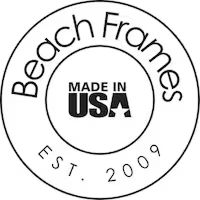
-
Development
- Ecommerce
- Web Development
- Responsive Web Design
- Website Security
- Website Updates
- WordPress
-
And more

- We’re all in on your growth. Explore all of our services.
Development
And more

While everyone’s fighting for Google rankings, the real opportunity is being the answer AI gives when people ask for recommendations. Master AI SEO to become the trusted choice in every AI conversation.


Here’s the uncomfortable truth: More people are asking ChatGPT, “What’s the best [your service] near me?” than ever before. And if AI doesn’t know about you, or worse, recommends your competitors, you’re losing customers you’ll never even know about.
You’ve mastered traditional SEO. Your Google rankings are solid. But when someone asks Claude for advice in your industry, it’s like you don’t exist. Meanwhile, your competitors keep showing up in AI responses, building authority and trust with every recommendation.
The problem? AI doesn’t browse websites like Google does. It pulls from training data, citations, authoritative sources, and specific patterns that most businesses completely ignore. You need a completely different playbook—one that positions you as the obvious choice when AI is asked for recommendations.
That’s where AI SEO comes in. Not using AI to rank better, but ranking inside the AI systems that are rapidly becoming the primary way people find businesses.
Ai Seo Services
Our AI SEO services position your business as the go-to recommendation across ChatGPT, Claude, Perplexity, and every AI platform your customers use. This isn’t about gaming the system; it’s about building genuine authority that AI recognizes and trusts.
When you partner with Connective for AI SEO, you’re getting strategies designed specifically for how AI systems evaluate and recommend businesses:
We create content that answers the exact questions AI users ask, even if those queries have zero traditional search volume. It’s about being the perfect answer to specific problems, not chasing broad keywords.
AI trusts sources it can verify. We get your business cited in the publications, directories, and platforms that AI systems consider authoritative, building a web of credibility AI can’t ignore.
We analyze why AI recommends certain businesses over others, identifying the patterns and signals that matter. Then we systematically build those same signals for your business.
AI SEO services begin at $3,000/month. Every strategy is customized based on your industry’s AI landscape and competitive positioning. Inquire now for detailed pricing.

See how we’ve helped businesses become the default recommendation across AI platforms.
From local restaurants becoming ChatGPT’s top recommendation to B2B software companies dominating AI-powered research tools, we’ve cracked the code on AI visibility.
I have used a lot of website and SEO companies before and have to honestly say that Rodney and his team are the best by a wide margin! They listen, they act, and are truly connected to the client and their needs.
Couldn’t be happier with Connective Web Design!

…you understand that citations and mentions matter more than backlinks now.
AI doesn’t crawl websites—it evaluates reputation through citations and authoritative mentions.

Our AI SEO Methodology
We analyze your current presence across major AI platforms, identifying where you’re mentioned, where you’re missing, and why. This includes testing hundreds of queries to understand how AI currently perceives your business.
Our team maps out where your successful competitors are cited and mentioned, revealing the authoritative sources AI trusts in your industry. We identify exactly which citations will move the needle for AI recommendations.
We develop content that answers the exact questions AI users ask, focusing on specific use cases, detailed comparisons, and bottom-funnel queries that traditional SEO ignores but AI values highly.
This is where we build your AI reputation. We secure citations in trusted sources, create detailed profiles in specialized directories, and ensure your expertise is documented where AI looks for validation.
We systematically test and refine how AI responds to queries about your business, adjusting our strategy based on real AI outputs. Every mention is an opportunity to strengthen your position.
AI recommendations change as new data emerges. We continuously monitor how AI talks about you versus competitors, adjusting our approach to maintain and expand your advantage.

AI SEO is the practice of optimizing your business to be recommended by AI systems like ChatGPT, Claude, and Perplexity. Unlike traditional SEO that focuses on Google rankings, AI SEO ensures you’re the answer when someone asks AI for recommendations in your industry. It’s about building the signals AI trusts: citations, specific expertise, and authoritative mentions.
Here’s the thing: AI users ask incredibly specific questions. “What’s the best tax attorney in Denver for cryptocurrency issues?” might have zero search volume in Google, but it’s exactly what someone asks ChatGPT. These hyper-specific queries indicate high intent and convert at much higher rates than broad searches.
We can guarantee we’ll dramatically improve your AI visibility using proven strategies. While we can’t control every AI recommendation, our clients typically see significant increases in AI mentions within 60-90 days. The key is building genuine authority that AI recognizes as valuable.
That’s the beauty of our approach. By building genuine authority through citations and specific expertise, you’re positioned to rank in any AI system. New platforms will rely on similar signals of credibility, so our strategies remain effective as the AI landscape evolves.
AI systems base recommendations on their training data and the patterns they’ve learned about trustworthy businesses. They look for consistent citations across authoritative sources, specific expertise demonstrated through detailed content, and clear signals of credibility. Unlike Google, they can’t browse your website in real-time—they rely on what they’ve learned about you from trusted sources.
Citations are everything. While Google can crawl your website directly, AI systems rely on mentions in trusted sources. A citation in an industry publication or respected directory carries more weight than hundreds of pages on your website. We focus on building citations where AI has learned to look for authority.
Traditional SEO optimizes for search engines that crawl the web. AI SEO optimizes for systems trained on specific datasets. It requires different content strategies (hyper-specific over broad), different link building (citations over backlinks), and different success metrics (recommendation quality over traffic volume).
We track AI mentions across platforms, monitor recommendation frequency for key queries, measure lead quality from AI sources, and analyze competitive positioning in AI responses. You’ll see exactly how often you’re recommended and for which valuable queries.
Still curious about AI SEO? We should talk.
Websites that AI and humans love
Your website needs to reinforce what AI says about you. We create sites that validate AI recommendations and convert visitors who arrive with high intent. Learn more >>
Hyper-specific content that AI values
Beyond basic content, we create the detailed, specific resources that establish you as the expert AI turns to for answers in your field. Learn more >>
Building the authority AI recognizes
Strategic citation building and digital PR that puts your business in the sources AI trusts most. Every mention strategically reinforces your expertise. Learn more >>
While your competitors fight over Google rankings, you could be winning the AI game. Every day, thousands of people ask ChatGPT, Claude, and other AI systems for recommendations—and every day you’re not there is a day you’re losing customers to whoever is.
AI SEO isn’t just another marketing channel. It’s the future of how people discover businesses. And unlike traditional SEO, where you’re competing with everyone, AI SEO is still wide open. The businesses that establish authority now will dominate AI recommendations for years.
At Connective, we’ve cracked the code on AI visibility. We know exactly what makes AI trust and recommend certain businesses—and we know how to build those same signals for you.
Don’t wait for your competitors to figure this out. Let’s make you the obvious choice in every AI conversation.
